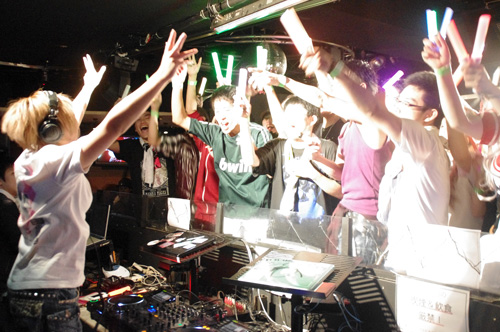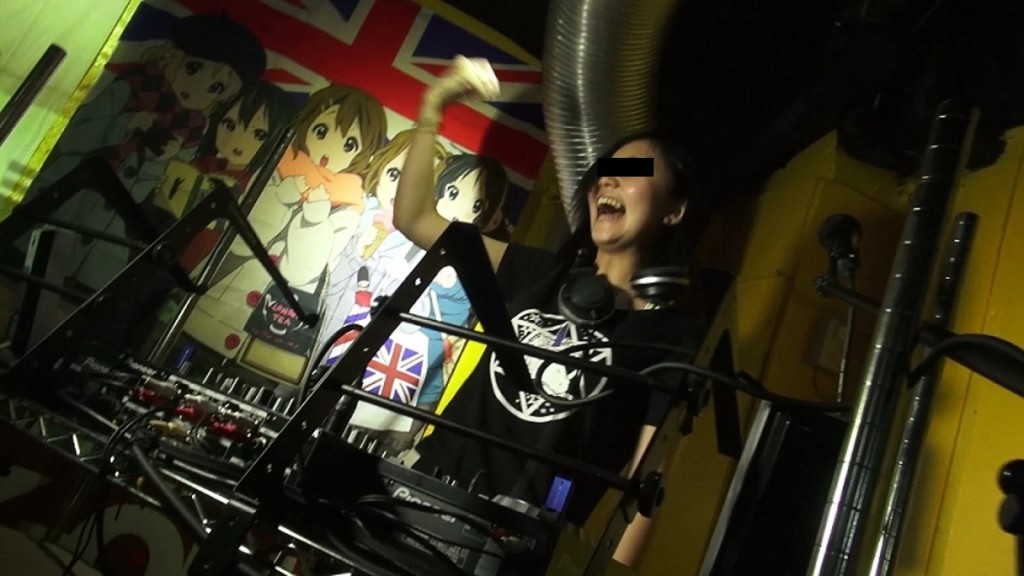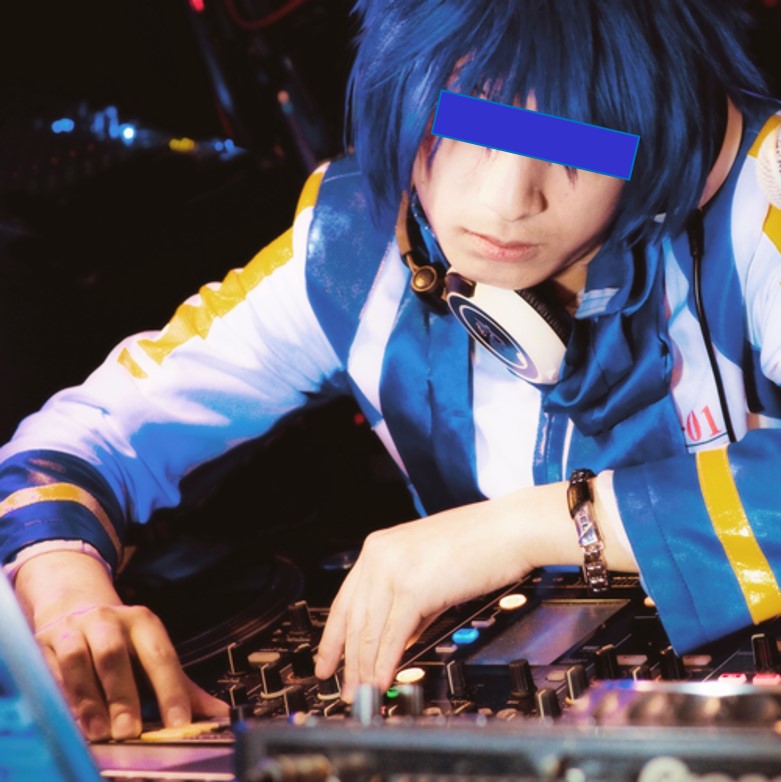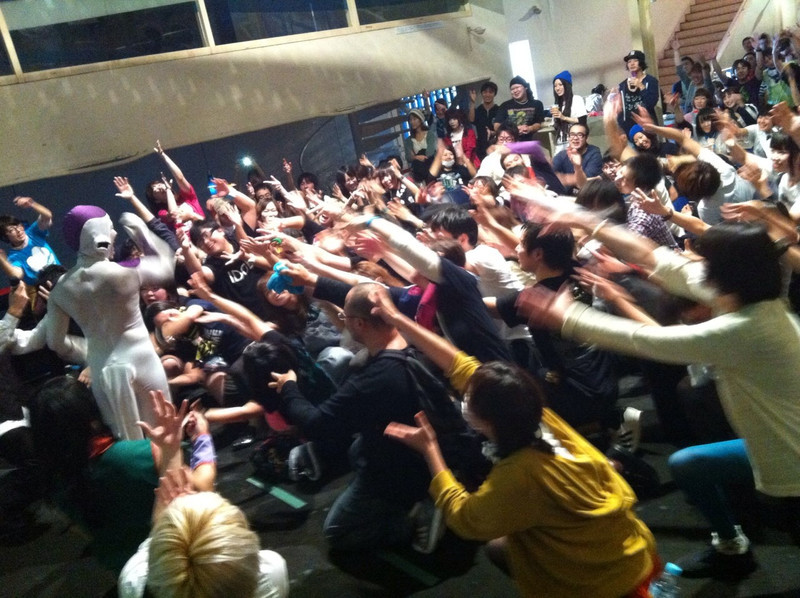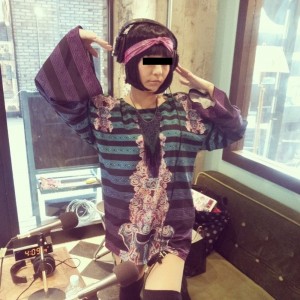In the internet age we have a unique ability to observe in real time the birth of new subcultures and the transformation of existing subcultures into mainstream trends. The internet as a medium can additionally act as an accelerant for such subcultures shortening the length of time needed to propagate, “mature” into viable large scale trends and broaden their reach onto a fully global stage.
Today, among Japanese subcultures, there exists an emerging candidate which has all of the makings of a pop culture perfect storm. The emergent otaku fashion/music/culture boom is sweeping youth circles in Japan and holds the serious potential for mainstream appeal both in Japan and abroad. What the various streams of otaku subculture have lacked in the past is a unifying and more broadly appealing pillar element. That final piece of the puzzle appears to be emerging through the phenomenon of “Anisong”.
Anisong is the Japanese contraction of the words “anime” and “song” used to denote the original and remixed versions of Japanese animated tv/film show theme music. As a standalone musical subgenre anisong has been popular among anime fans in Japan and abroad since at least the mid-80’s. The change has come with the incorporation of other elements of popular otaku culture with Anisong as both background and nexus for organized events and fandom. The drive to create original remixes and new content within the Anisong space has been accelerated by the internet (facilitates both the ability to share and wide access to mixing programs and fan boards) and new technologies like the virtual idol programs (Hatsune Miku, etc.) of the past few years which encourage fan content generation. The genesis of a unique and identifiable subcultural fashion (highly influenced by cosplay), events (so-called “Anisong Raves”) and a sense of shared identity space (both online and off) has driven the popularity and consequent further differentiation of Anisong based events and fashions into its own “thing” now easily observed in the wilds of the offline world. As with most sub-cultures the musical element is acting as an umbrella under which disparate elements of an emerging unified trend coordinates identity.
Anisong events are an increasingly common feature of urban Tokyo. There are a number of aspects of these events which stand out as both different from expectations and as indicators of a deeper cultural stirring. The first, and in many ways most significant, is the number and type of people who attend the events. These events are typically held in mid-sized venues (several hundred attendees per) within core Tokyo and are consistently packed to capacity. Despite the popular image of anime fans and otaku in general these events are populated with crowds of young people who would not be out of place on the streets of Shibuya or Omotesando (cores of Tokyo youth fashion cool). There is hardly a neck beard to be found among the lot. Walking through the streets of the Otaku mecca, Akihabara, today one would be surprised by the “normalcy”, indeed in many cases the heavy existing cool level of the crowds. The widening appeal (outside of hard core fans and NEET circles) of otaku culture in general over the past few years augers well for its continued evolution into the mainstream.
In a large scale study among young people in Japan in 2013, 42.2% of respondents (15-28yo, male and female) self-identified as “otaku”. While there are endless subgenres of the otaku class there is little question that, particularly among the young people of Japan, it is most definitely approaching real main stream status. One significant defining aspect of the otaku archetype is their willingness to spend vast sums of money on their interests (a highly necessary element in elevating a trend into the commercial mainstream). Another is their massive and organic use of technology and the internet in all facets of life. The diversity of interests and fandom which has typically loosely defined otaku culture within Japan can also be seen to be unifying into a more cohesive group identity as increasing numbers of new sub-culture adherents join in.
The typical Anisong event begins with an intro DJ spinning a chill set of remixed anime theme songs from the mid-90’s/early-Y2K and a lot of people standing around the edges of the dance floor on their smartphones and tablets. Within the first hour, however, separate friend groups arrive and change from their street clothes into an array of cosplay outfits, most noticeable for the unsubtle sexuality of both the male and female attire. By the end of the first several hours of the event there are typically several hundred people in cosplay (many of whom had arrived so attired). One interesting point of note about the cosplay fashions seen is that it is not solely made up of “orthodox” character emulation but is far more an amalgam of fantastic elements of anime/game character inspired fashions admixed with stylish street fashions. As anyone who is familiar with the multiple over the top youth fashion trends in Japan over the past two decades (Gyaru, Loli, Shinjuku Casual, etc.) knows the Japanese are not afraid of wearing very stand out clothing, especially as it becomes associated with a particular sub cultural norm. The cosplay/high fashion style mix on display at these events feels entirely similar to early iterations of the Shibuya Gyaru movement in their pushing of boundaries and whimsical experimentation. The fact that such an event and the people who attended it provided a safe space for this experimentation speaks volumes about the understanding within the group itself about the nature of their relationship with each other and the sub-culture they are sharing.
As an event heats up and more people arrive the dancing kicks into high gear. The influence of idol event fan routines, earlier para-para and simple rave movements become easily apparent. Attendees are typically issued with promotional glow sticks upon entering an event though most bring their own personalized or more powerful lights and glow sticks. The highly elaborate dance moves, particularly coordinated among small groups, are well practiced and given the number of impromptu group routines standardized to a degree among those who regularly attended these events.
Anisong remixes run the spectrum from ambient to hard house to the saccharine “moe” power ballads. The one consistent theme is that they were all derived and remixed from the musical scores and theme songs of anime and games. Among the DJs who spun at these events the majority are women. The overall ratio of men to women attending reveals a slight but significant majority of young women. Engagement in the fashion side is proportionately equal. The lead being taken by women in this sub-culture marks it as significant for the potential broader appeal as women have been the lead in the majority of previous large scale subcultural trends over the past several decades in Japan.
Far and away the most significant indicator for future mass popularity is the sheer energy of the participants. The near worship shown to the music and the accompanying projected imagery shows a strong degree of dedicated fandom. Songs played at these events are accompanied by compilations of the anime from which they derive. Many of these visual compilations are exceptionally well crafted and fitted to the remix being played at the time. The multi-media aspect of the Anisong phenomenon is unique among other musical genres currently popular in Japan and around the world. While most music has a corresponding video Anisong has an entire show as well as movies and related media from which to draw visual content. The visuals are typically fan made and with the wide availability of the content as well as powerful editing software quite easily made. The number of global user generated AMV (Anime Music Videos) available on YouTube, for example, is currently in the millions. The ability to not just consume pre-packaged musical and visual content but to mix and make your own from a very deep well of content (both from series cannon as well as fan generated works) adds an extra dimension to the Anisong movement not found in other genres. A shared experience with the source materials (anime, manga, games, etc.) gives participants a strong kinship element and makes the sub-culture highly approachable for a wider range of people.
The fact that the Anisong genre is organically net based as well makes the sharing of content and the refining of styles among a global fan base not just possible but core to the culture. The potential for rapid global popularity also sets the Anisong culture apart from other musical and fashion based trends. Japanese anime is hugely popular outside of Japan and the high level of diversity among anime opens fandom to a much wider potential audience than single image musical genres of the past. Stagnation among competing current musical and fashion sub-cultures, the increasing ease of hyper rapid, global viral sub-culture spread, as well as the increasing kawaii-fication of youth culture around the world makes the potential for a global Anisong led otaku boom quite real.
Anisong is, as a standalone musical genre, a long standing and rather addictive blend of techno pop and saccharine sweet Japanese “moe” styles. As a binding agent for other aspects of Japanese and global otaku culture Anisong is the potential background music to the first truly global youth culture movement of the 21st century. As the otaku subculture becomes more cohesive and approaches the mainstream, events like Anisong raves and the music itself will increasingly act to bond together the movement/fashion/culture into a cohesive and globally attractive whole.

